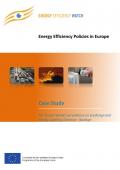This case study concentrates on the island of Lolland in the Region Zealand in Denmark, home to 46,000 people. It used to be a manufacturing and agricultural powerhouse due to its shipbuilding industry and intensive sugar beet production, supported by Common Agricultural Policy (CAP) subsidies. During the 1990s and 2000s both manufacturing and agriculture were challenged by international competition and a drastic reduction of EU subsidies to primary activities, forcing the rural part of the region into a structural economic downturn.
However, an aggressive national policy towards renewable energy has created development opportunities in Region Zealand, particularly in Lolland. The region has attracted a large number of wind installations due to its wind resource, which is one of the best in Denmark. Regional institutions (including public authorities and private businesses) even have looked beyond the mere deployment of installations and have put renewable energy at the centre of development strategy.
This study examines experience of the region, and suggests four main findings: i) Bottom-up initiatives can link renewable energy and local rural development; ii) One way rural regions can contribute to innovation in renewable energy technologies is to provide testing facilities; iii) Renewable energy is not a panacea for regional development, but it can help local communities to retain some valuable jobs and contribute to the regional branding strategy; iv) In spite of the strong support for the national green agenda, there are issues about social acceptance of wind installations - this causes transaction costs to rise and necessitates time-consuming procedures to deploy renewable energy.

